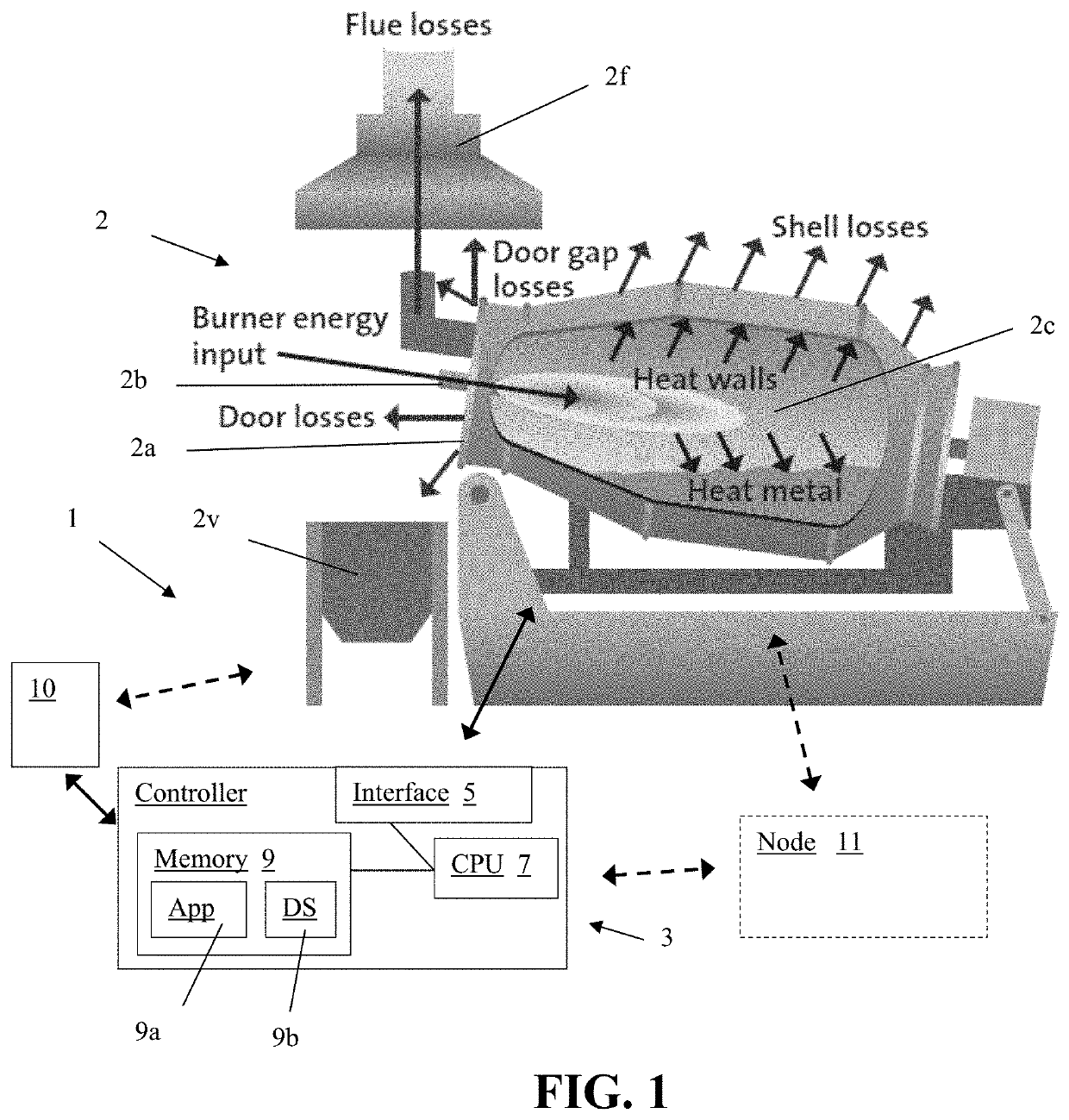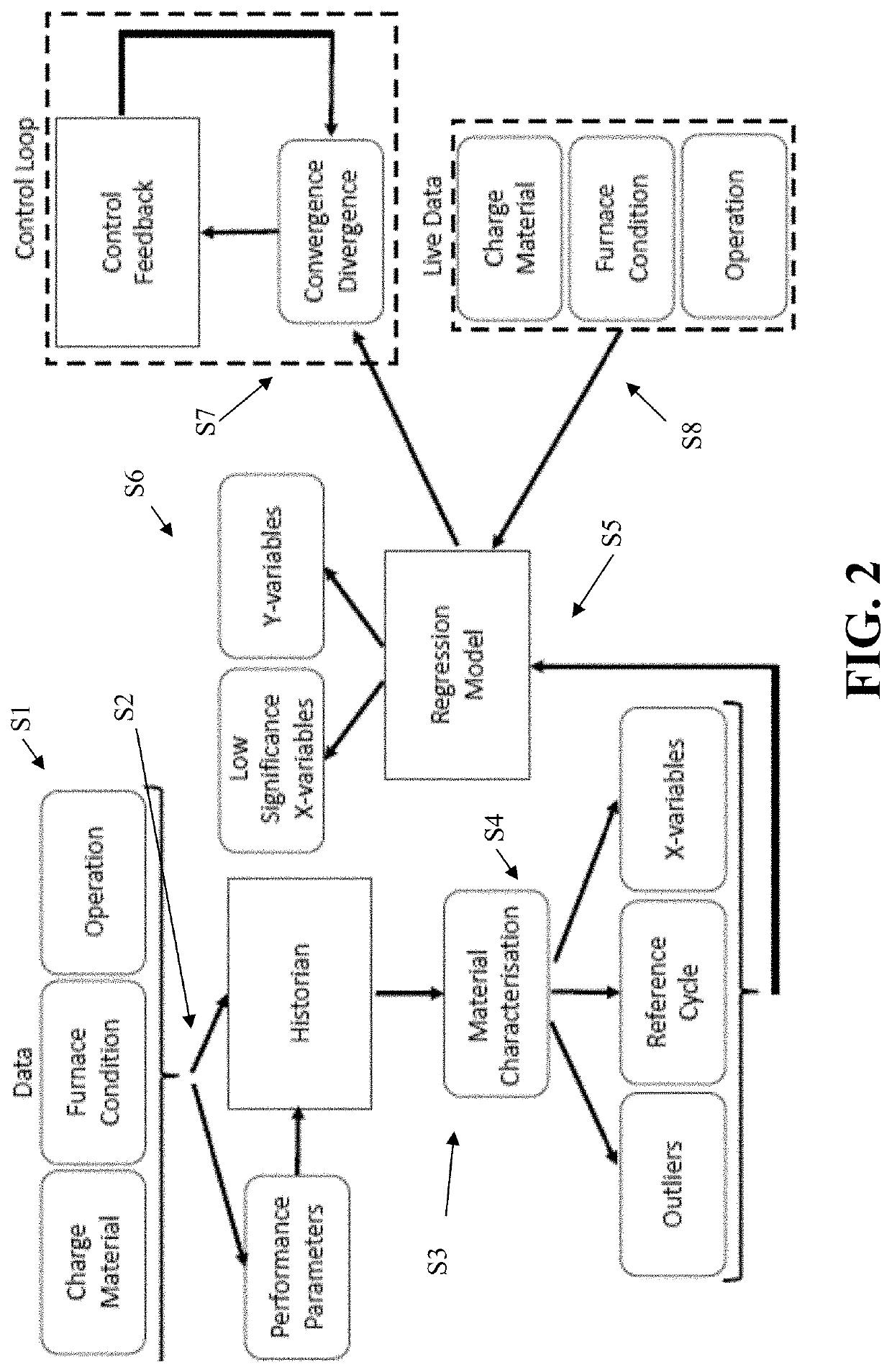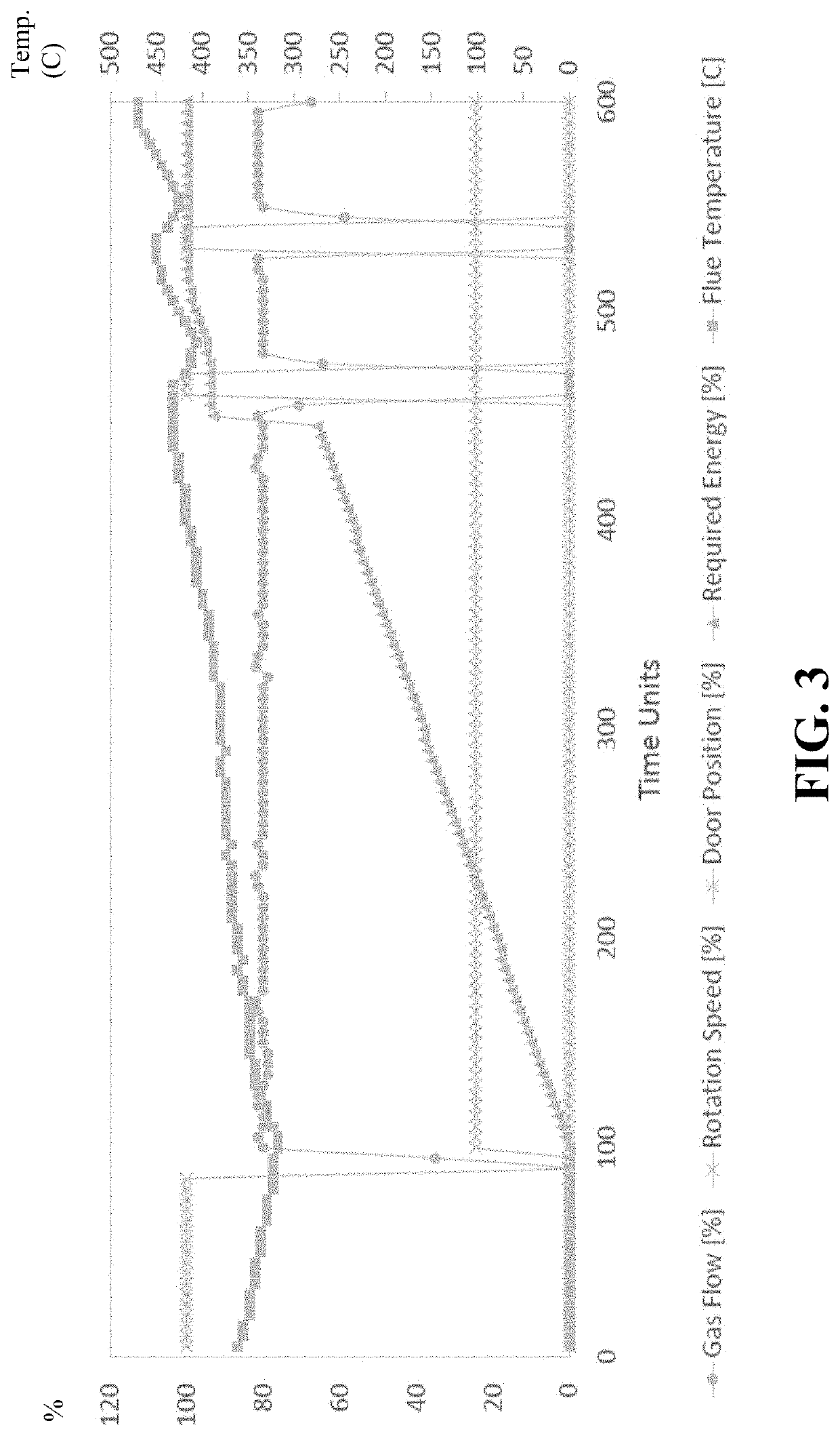Furnace Controller and Method of Operating a Furnace
- Summary
- Abstract
- Description
- Claims
- Application Information
AI Technical Summary
Benefits of technology
Problems solved by technology
Method used
Image
Examples
example 1
[0104]FIG. 3 illustrates a graph showing a cycle where the required energy calculation was corrected due to divergence from utilization of an embodiment of our method implemented in an exemplary embodiment of the controller 3. The burner gas flow rate, furnace rotation speed, furnace door position, required energy calculation and flue temperature are shown in FIG. 3. Initially, the furnace door is open (100%) for charging, where the burner is off (0%), the furnace is not rotating (0%) and the flue temperature can be seen to be reducing as it moves to equilibrium with the ambient conditions. At time 77, the furnace door is closed and subsequently the burner is turned on to 80% firing rate and the furnace is set to 40% rotation speed. As time progresses the required energy calculation can be seen to increase steadily up to about 65% of the total required energy (percent completion) at around 435 time units. Leading up to this point, the controller 3 recognized a significant deviation ...
example 2
[0105]This example, which is shown in FIG. 4, shows how the controller 3 can be used to correct for aluminum oxidation (yield) losses when the furnace 2 is used for melting of aluminum. In this example, the controller defined a regression equation relating yield loss (a y-variable) to the data parameters (x-variables) to mitigate yield losses during a given cycle of the furnace. Typically, it is expected that aluminum will always oxidize to some extent during a cycle, due to the nature of the melting process. The regression model was defined for use by the controller 3 to compare the performance of the live cycle to the reference case to determine the extent in which the aluminum oxidation occurs throughout the cycle. In this exemplary case, the reference cycle is considered to undergo minimal aluminum oxidation. When significant aluminum oxidation is identified, corrective action was taken, where typically, either the burner firing rate and / or furnace rotation speed can be reduced ...
example 3
[0108]To help further demonstrate the improved performance that embodiments of the controller 3 can provide, a sample of nearly 700 cycles from an aluminum tilt rotary furnace are discussed as an example with reference to FIGS. 6-8. The materials were characterized into 9 different material groups in the third step S3 of the method for this embodiment of this example. The expected aluminum content of these material groups ranged between 20-80% aluminum. The number of cycles in each material group ranged from 25-86 cycles and the percentage aluminum in each material varied no more than +1-5% of the average aluminum content.
[0109]The y-variable chosen in step S6 of the embodiment of the method for this example was aluminum oxidation (yield) losses and the resulting statistical model showed that there were a number of x-variable parameters that significantly affected yield loss, including the ratio of salt used, aluminum and oxide content in the charge material, melt rate, metal tappin...
PUM
| Property | Measurement | Unit |
|---|---|---|
| Time | aaaaa | aaaaa |
| Melting point | aaaaa | aaaaa |
Abstract
Description
Claims
Application Information
 Login to View More
Login to View More - R&D
- Intellectual Property
- Life Sciences
- Materials
- Tech Scout
- Unparalleled Data Quality
- Higher Quality Content
- 60% Fewer Hallucinations
Browse by: Latest US Patents, China's latest patents, Technical Efficacy Thesaurus, Application Domain, Technology Topic, Popular Technical Reports.
© 2025 PatSnap. All rights reserved.Legal|Privacy policy|Modern Slavery Act Transparency Statement|Sitemap|About US| Contact US: help@patsnap.com



